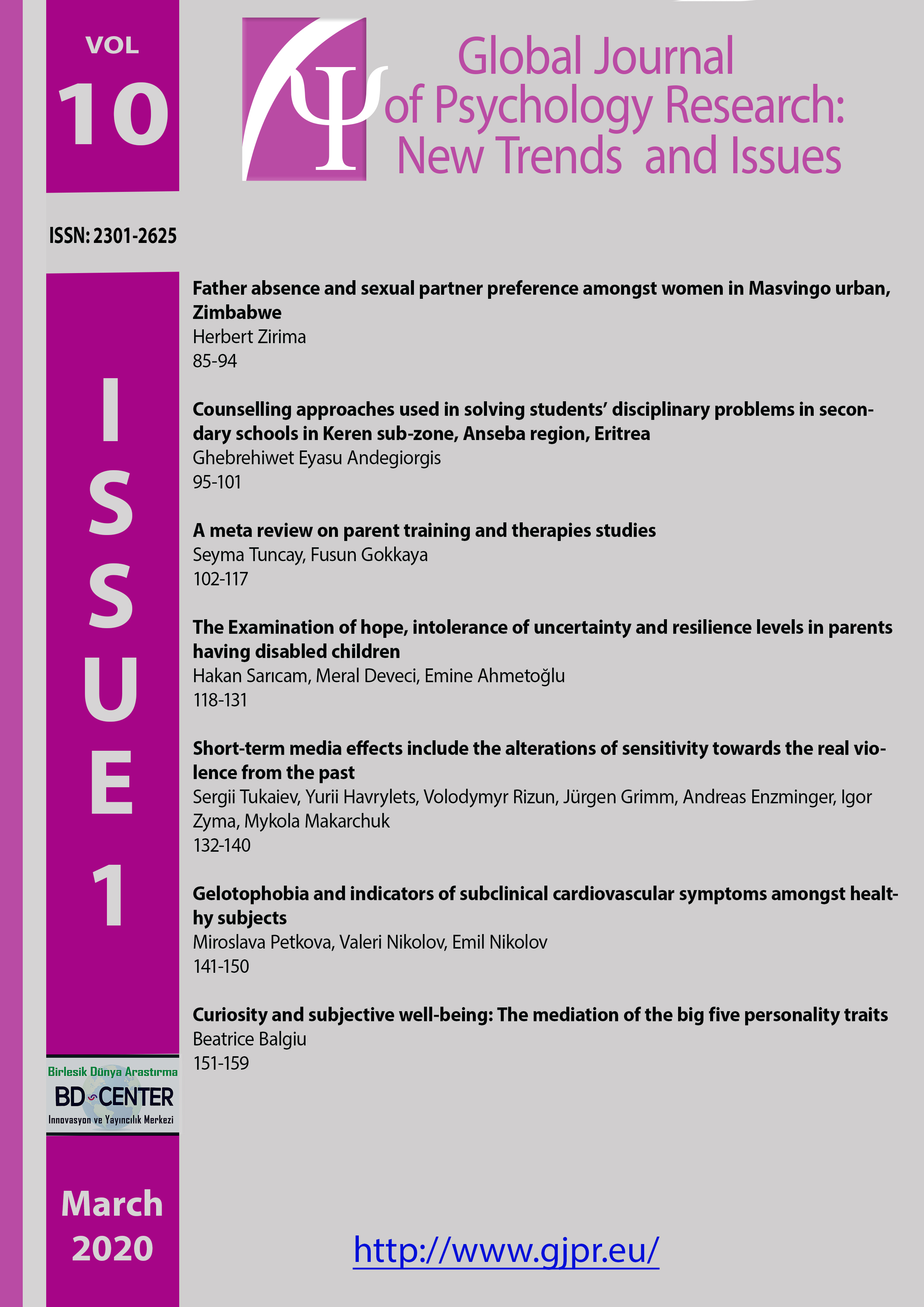
Global Journal of Psychology Research: New Trends and Issues
Yazarlar: Tuba Kalay, İlke Sine Egeci, Serap Ozer
Konular:-
Anahtar Kelimeler:State anger,Anger expression,Adaptation,STAXI,Emotions.
Özet: Abstract The purpose of this study was to investigate the psychometric properties of the Turkish version of the State Anger Subscale of Spielberger using a sample of Turkish undergraduate students aged 18 to 31 years. The scale’s reliability and validity were assessed by examining its internal consistency, factor analytic structure, concurrent, and construct validity. Supporting the validity of the scale, one factor structure underlying the original form was replicated. A statistically significant relation between the State Trait Anger Expression Inventory and the Novaco Anger Scale was also found. Regarding construct validity, an experimental manipulation using anger induction and imagination revealed a significant difference between experimental and control group. Overall, the findings indicate that the State Anger Subscale is a reliable and valid assessment tool for research and clinical practice to identify angry people in Turkey.